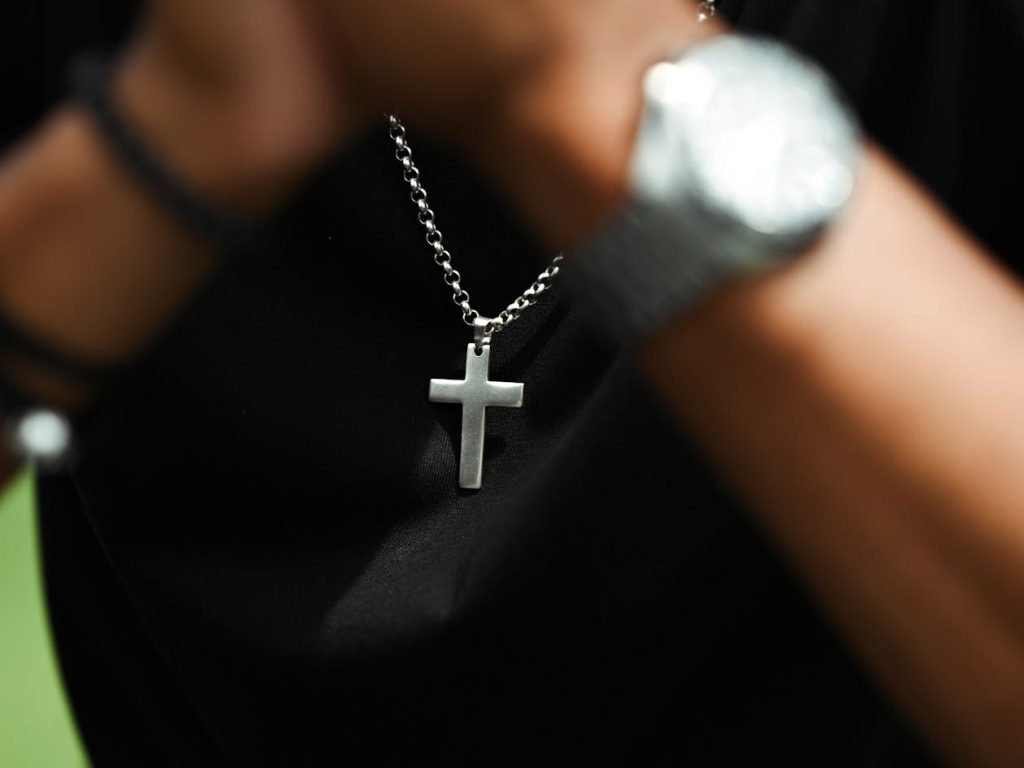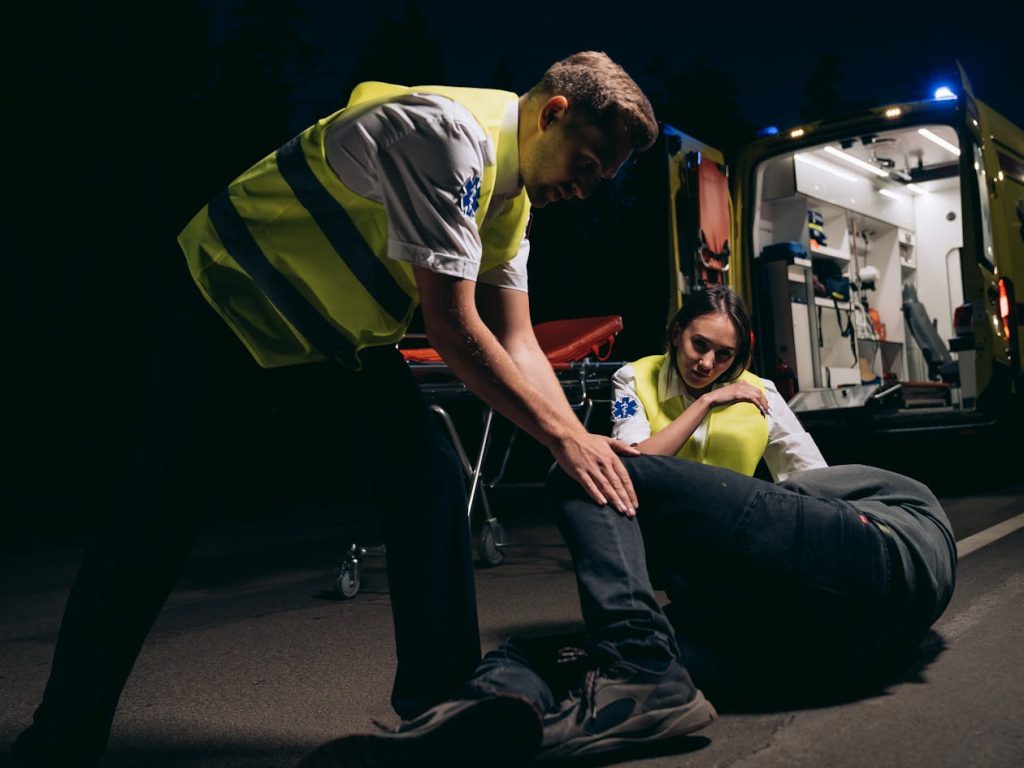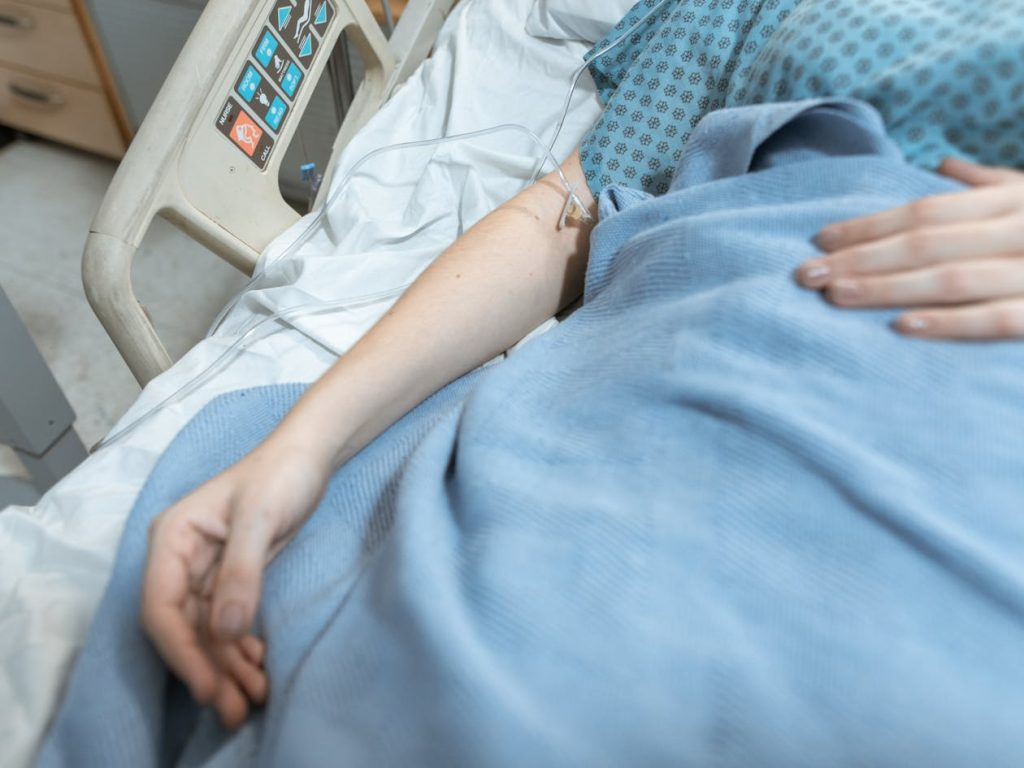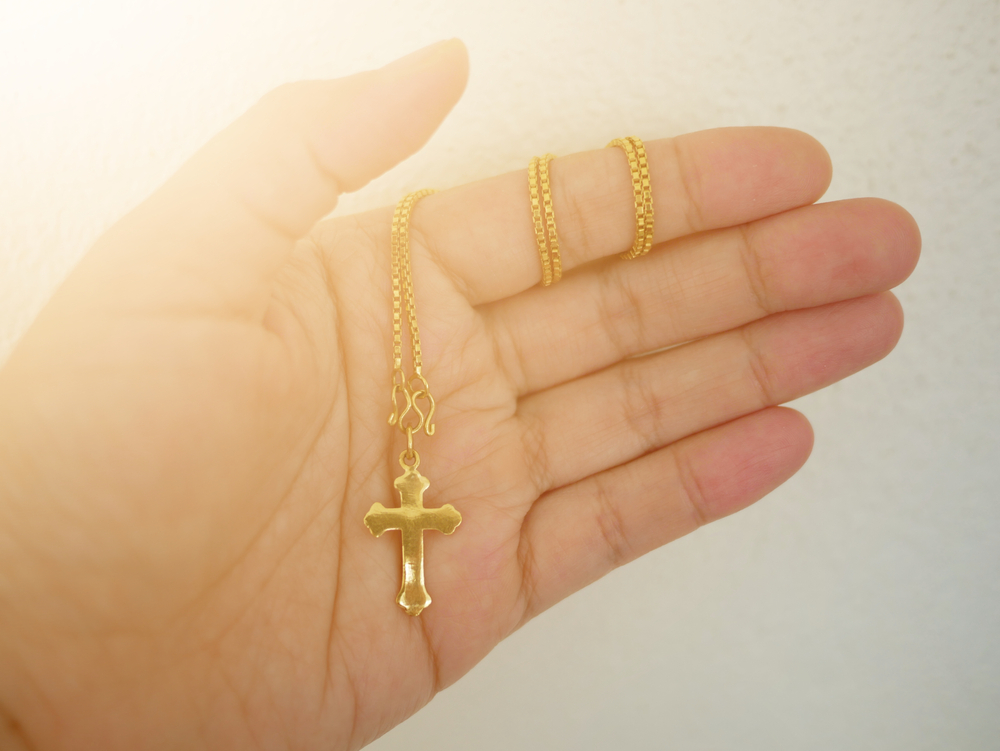Your cart is currently empty!
Man Survives Being Shot After Cross Necklace Diverts Bullet in Shocking Miracle
An ordinary afternoon turned into a life-or-death moment for Aidan Perry during a visit to a friend’s house in Ocala, Florida. What started as casual time hanging out ended with emergency surgery, shattered bone, and a piece of jewelry that defied every expectation about protection and survival.
Medical professionals who treated Perry later described his case as statistically rare. Trauma surgeons who see chest injuries found themselves documenting something different. Evidence emerged that challenged what we know about ballistics, human anatomy, and perhaps something beyond scientific explanation.
Twenty-year-old Perry carries physical reminders of that June afternoon, but also carries a story that has strengthened his faith and amazed medical professionals. His survival depended on factors that seemed aligned, creating an outcome that defied medical expectations and left experts searching for explanations.
Friend’s House Becomes Scene of Shocking Accident
Perry visited his friend’s residence in Ocala during what appeared to be an unremarkable summer day. Friends gathered at the home, likely expecting nothing more serious than conversation and relaxation. However, circumstances would shift dramatically when a .40-caliber pistol discharged accidentally.
Firearms accidents occur with tragic frequency across America, often resulting in serious injuries or fatalities. Perry found himself facing exactly this scenario when the weapon fired at close range, sending a bullet directly toward his chest. Split seconds would determine whether he survived or became another statistic in accidental shooting data.
Witnesses to the incident immediately recognized the severity of Perry’s situation. A .40-caliber round carries substantial stopping power, designed to incapacitate targets effectively. At close range, such ammunition typically creates devastating tissue damage and organ trauma that challenges even skilled trauma teams.
Perry’s location on his friend’s property meant emergency responders would need time to reach him and transport him to medical facilities. Every moment counted as his body processed the impact and damage from the gunshot wound.
Emergency Response Unfolds

Hospital teams prepared for typical gunshot wound protocols, anticipating severe chest trauma requiring immediate surgical intervention. Perry’s vital signs and consciousness level during transport would have provided initial indicators about his condition and survival prospects.
Medical staff at HCA Florida Ocala Hospital moved Perry directly to the operating room upon arrival. Trauma teams accustomed to gunshot victims began their assessment, expecting to find the devastating internal injuries that typically accompany close-range chest wounds from ammunition.
Perry remained conscious enough to comprehend his situation during these critical moments. Looking down at his chest, he saw massive amounts of blood that convinced him his survival was unlikely. His fear reflected the gravity that medical professionals also recognized in his condition.
Cross Pendant Splits Bullet in Medical Marvel

Perry wore a gold necklace featuring a cross pendant during the shooting incident. Medical examination revealed that the bullet had struck this piece of jewelry directly, creating an unexpected barrier between the projectile and Perry’s vital organs.
Ballistics experts understand that bullets typically maintain their trajectory and destructive power when encountering small metal objects. However, Perry’s cross pendant managed to split the bullet, altering its path and reducing its penetrating capability significantly.
Physical evidence from the incident showed the cross pendant split cleanly into two pieces where the bullet struck. Photography documented the damaged jewelry, providing visual proof of the impact that medical professionals believe saved Perry’s life.
Perry’s father had given him the gold cross necklace as a Christmas gift just months before the shooting occurred. A present intended to represent faith and protection had provided physical protection during a life-threatening emergency.
Bullet’s Bizarre Path Through Perry’s Body

Despite striking the cross pendant, the bullet continued its journey through Perry’s body following an unusual trajectory. After hitting the necklace, the projectile entered his chest area but avoided penetrating deeply into his torso cavity, where vital organs could have sustained fatal damage.
Medical examination traced the bullet’s path as it exited Perry’s body near his armpit after traveling along his chest wall. However, the projectile’s journey did not end there, as it reentered his body through his arm, causing significant bone damage.
Impact with Perry’s arm resulted in a broken humerus, the large bone connecting the shoulder to the elbow. While painful and requiring treatment, this fracture represented far less serious trauma than the chest injuries that medical professionals typically encounter with similar gunshot wounds.
Perry’s survival depended on the bullet missing his heart, lungs, and major blood vessels in his chest cavity. Trajectory analysis suggested that without the cross pendant’s intervention, the bullet would have traveled directly into these vital organs with almost certainly fatal results.
Trauma Surgeon Explains Life-Saving Deflection
Dr. Khafra Garcia Henry, the trauma surgeon who operated on Perry, provided a medical analysis of his unusual case. Her expertise in treating gunshot victims gave her a professional perspective on why Perry’s survival qualified as extraordinary rather than routine.
“When we normally see these injuries, they’re usually devastating injuries,” Henry explained. “In Aidan’s case, he was fortunate enough [in that] the bullet did not enter his chest wall – it ricocheted off the chain he was wearing.”
Henry’s experience treating similar cases provided context for understanding Perry’s remarkable outcome. Chest wounds from .40-caliber ammunition typically create massive tissue damage and organ trauma that challenge even experienced trauma teams working under optimal conditions.
Medical professionals understand that small metal objects rarely provide effective protection against high-velocity ammunition. Perry’s case represented a statistical anomaly that defied conventional expectations about ballistics and protective equipment.
Perry’s Moment of Truth

Perry’s immediate reaction to being shot included looking down and seeing substantial blood loss that convinced him he might not survive. His fear reflected the natural human response to recognizing life-threatening trauma and uncertain survival prospects.
“It’s just kind of a reminder now – to never stop believing,” Perry reflected on his experience. “Keep believing and God’s definitely real.”
Medical teams worked to stabilize Perry’s condition and address his injuries while he processed the reality of his situation. Chest wounds typically create significant bleeding that can lead to shock and cardiovascular collapse without rapid medical intervention.
Perry’s consciousness during initial treatment allowed him to experience the full gravity of his situation. Many gunshot victims lose consciousness due to blood loss or shock, but Perry remained aware of his condition and the medical response around him.
Faith Grows Stronger After Near-Death Experience
Perry described himself as religious before the shooting incident, but his near-death experience significantly strengthened his spiritual beliefs. Surviving what medical professionals considered potentially fatal trauma reinforced his conviction about divine protection and intervention.
His testimony about the incident consistently references faith and belief as central elements of his survival story. Perry views his experience as evidence of divine protection that goes beyond medical explanation or random chance.
Religious communities often interpret survival from life-threatening situations as examples of divine intervention or protection. Perry’s case provides what believers consider physical evidence of spiritual protection through the cross pendant that deflected the bullet.
Perry has shared his story publicly, hoping to encourage others to maintain faith during difficult circumstances. His survival serves as inspiration for those facing challenges that seem insurmountable or hopeless.
Legal Consequences for an Accidental Shooter

Law enforcement arrested the individual responsible for Perry’s shooting in Sumter County following an investigation of the incident. Accidental discharge of firearms carries legal consequences even when shooters lack the intent to cause harm.
Criminal charges of culpable negligence causing injury were filed against the person who shot Perry. Legal systems recognize that firearm owners bear responsibility for preventing accidental discharges that injure others, regardless of intent.
Firearms safety protocols exist specifically to prevent incidents like Perry’s shooting. Proper handling, storage, and safety practices reduce the risks of accidental discharge that can cause serious injuries or fatalities.
Perry’s case demonstrates how quickly social gatherings can transform into legal and medical emergencies when firearms safety protocols are ignored or violated. Criminal justice responses aim to hold gun owners accountable for preventable injuries.
Christmas Gift Becomes Divine Intervention
Perry’s gold cross necklace represented more than decorative jewelry when his father gave it to him during Christmas celebrations. Family gifts often carry sentimental value, but few provide literal life-saving protection during emergencies.
Religious symbolism of cross pendants includes protection and faith, concepts that gained literal meaning during Perry’s shooting incident. Spiritual beliefs about divine protection found physical manifestation through jewelry that deflected deadly ammunition.
Perry’s family likely views the Christmas gift as divinely inspired, providing protection that no one anticipated when the present was given. Religious families often interpret such coincidences as evidence of divine providence and protection.
Father-son relationships carry special significance when gifts provide unexpected protection. Perry’s survival allows him to share his gratitude with the father whose Christmas present helped save his life.
Medical Community Weighs In on Rare Survival

Dr. Henry emphasized Perry’s fortunate outcome by noting he was “a very fortunate young individual because if his chain was not there, the outcome would have been completely different.”
Trauma surgeons regularly treat gunshot wounds and understand the typical damage patterns created by different ammunition types. Perry’s case challenged conventional expectations about protective equipment and survival odds.
Medical literature documents a few cases where small jewelry items successfully deflect ammunition. Perry’s survival represents a statistical anomaly that medical professionals struggle to explain through conventional ballistics understanding.
Emergency medicine training prepares doctors for typical gunshot wound presentations, not cases where jewelry provides effective protection against deadly ammunition. Perry’s case may influence how medical professionals consider unusual protective factors.
Message of Hope Emerges from Trauma
Perry transformed his traumatic experience into a message of hope and faith for others facing difficult circumstances. His survival story inspires those struggling with challenges that seem overwhelming or impossible to overcome.
Sharing his experience publicly allows Perry to encourage others to maintain faith during dark periods. His testimony suggests that protection and survival can come from unexpected sources when people maintain belief and hope.
Religious communities often embrace survival stories like Perry’s as evidence of divine protection and care. His case provides what believers consider tangible proof that faith can provide literal protection during life-threatening situations.
Perry’s ongoing recovery and strengthened faith demonstrate how traumatic experiences can lead to positive personal growth and renewed spiritual conviction. His story encourages others to look for meaning and hope even in frightening circumstances that challenge survival and faith.
